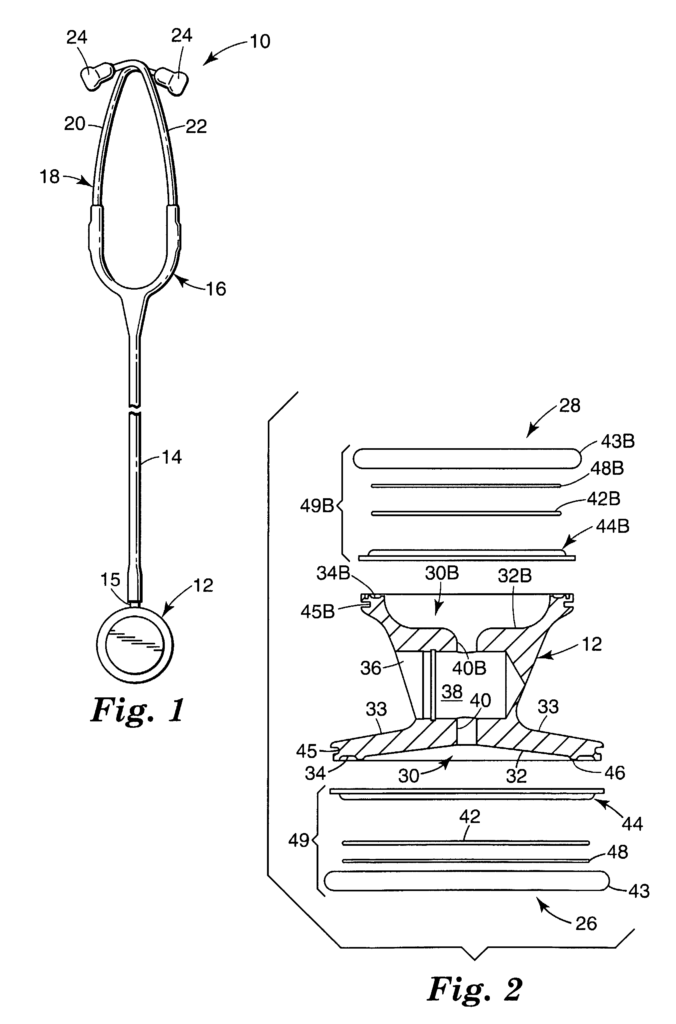Clear Frictionless Sound for Stethoscope Use
Introduction
This stethoscope technology with frictional noise reduction offers a critical improvement in auscultation, providing healthcare professionals with a tool that enhances sound clarity during medical examinations. With a focus on eliminating frictional noise that typically interferes with the detection of heart and lung sounds, this stethoscope enables more accurate diagnoses. For companies in the medical device industry, this technology is a valuable addition that can improve the performance of diagnostic tools and enhance patient care.
The Challenge: Reducing Noise Interference in Stethoscopes
Frictional noise is a common issue with traditional stethoscopes, especially in busy or high-motion environments such as hospitals and clinics. These background noises can obscure important diagnostic sounds, leading to missed or delayed diagnoses, particularly when assessing heart murmurs or abnormal lung sounds. Healthcare professionals require stethoscopes that can filter out these distractions to ensure that they are able to focus on the critical sounds that inform their medical evaluations. A device that addresses this issue with precision can make a significant difference in diagnostic accuracy.
Noise Reduction for Precision Auscultation
This frictionless sound stethoscope is designed to minimize the noise generated by contact with clothing or the patient’s body during use. The technology ensures that physicians and healthcare providers can listen to heartbeats, lung sounds, and other diagnostic indicators without interference, allowing for more accurate readings. The stethoscope’s ability to reduce unwanted noise while maintaining sensitivity to critical medical sounds represents a breakthrough in auscultation technology. Its user-friendly design makes it easy for healthcare professionals to perform their tasks with confidence, even in challenging environments.
Key Benefits for Healthcare Providers
For hospitals, clinics, and private practices, this technology enhances the accuracy of routine checkups and complex diagnoses by improving the clarity of critical sounds. Medical device companies that integrate this noise-reduction feature into their stethoscopes can offer a premium product that addresses a common pain point for healthcare professionals. Nurses, physicians, and emergency responders benefit from more efficient, precise auscultation, improving patient outcomes by reducing the likelihood of missed diagnoses. The enhanced clarity also leads to better patient-doctor communication, as medical professionals can confidently explain their findings.
Invest in Improved Diagnostic Tools
Licensing this frictionless sound stethoscope technology provides your organization with a unique opportunity to deliver superior diagnostic tools to the healthcare market. By addressing the challenge of frictional noise, this technology supports more accurate, efficient medical examinations, ultimately improving patient care. It’s an investment in innovation and reliability for healthcare providers, helping them to perform their jobs with greater precision and ease. This technology will position your company as a leader in the medical device industry, offering a product that sets new standards for diagnostic clarity and patient care.

- Abstract
- Claims
1. A stethoscope, comprising:
9. The stethoscope of claim 1, further comprising:
Share
Title
Stethoscope with frictional noise reduction
Inventor(s)
Thomas E. Drummond, Hatim M. Carim, Craig D. Oster
Assignee(s)
3M Innovative Properties Co
Patent #
7806226
Patent Date
October 5, 2010
